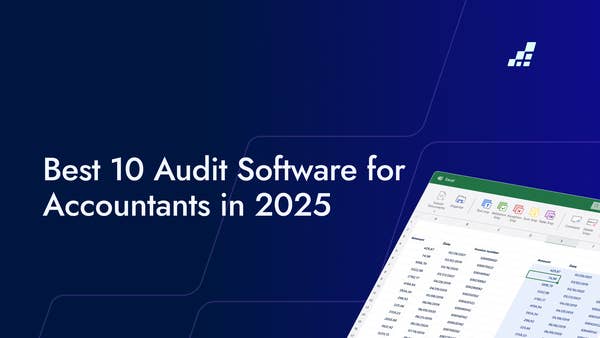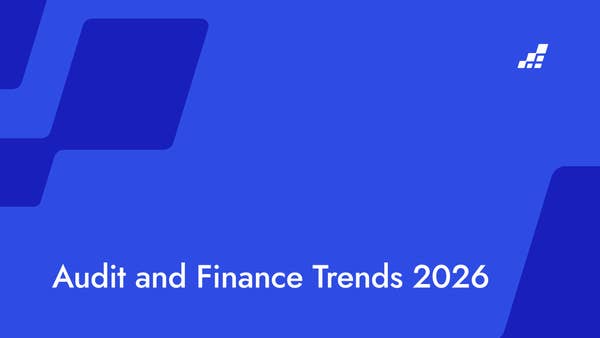- /
- Blog
What is Fraud in Audit?

Auditing plays a key role in protecting the financial world, tasked with uncovering any financial irregularities or inaccuracies. Yet, it's not bulletproof against fraud.
Let's explore what fraud in auditing entails, including its various forms, how it can be spotted, and ways to prevent it.
Understanding Fraud in Audit
Perpetrators of such actions can range from individuals within the company's management or employees to external parties.
Recognizing the seriousness of audit fraud is crucial. It goes beyond simply distorting a company's financial reality; it deteriorates the trust that investors place in these reports.
This loss of trust can have huge consequences, impacting not only the implicated company but also the broader economy.
Types of Fraud in Audit
- Fraudulent Financial Reporting: Deliberate presentation of inaccurate figures or omission of vital information in financial statements, often orchestrated by management to portray a more favorable financial picture.
- Misappropriation of Assets: Theft involving the misuse of company assets for personal gain, which can be perpetrated by employees, management, or third parties, potentially involving significant sums of money.
Detecting Fraud in Audit
Uncovering fraud in audit is a challenging task. Auditors aren’t exactly detective-trained, and those committing fraud are often skilled at hiding their tracks.
There are, however, several techniques that auditors can use to increase their chances of identifying fraud.
One of these techniques is called analytical procedures, which involves the analysis of key ratios and trends, and looking closely at any unusual fluctuations or patterns.
This approach can help auditors identify areas within the financial statements that might have been tampered with due to fraud.
Role of Technology in Detecting Fraud
Technology is key when it comes to detecting fraud during audits. With the help of advanced data analysis platforms, auditors can sift through large amounts of information to identify any odd patterns or trends that might indicate fraud.
For example, if an employee is consistently logging sales just a hair below a review-triggering level, that could wave a red flag for potential fraud.
How DataSnipper Bolsters Fraud Prevention in Auditing
By streamlining the audit process, DataSnipper cuts down the amount of time auditors need to spend on routine tasks, boosting efficiency. This allows auditors to allocate more attention to those areas that pose a higher risk of fraud.
As it centralizes workbooks and supporting documents, DataSnipper makes it easier for auditors to follow audit trails and spot anomalies and discrepancies in data.
DataSnipper is an indispensable ally in keeping both the audits accurate and fraud at bay.
Preventing Fraud in Audit
While detecting fraud during audits is important, preventing it from occurring in the first place is the best strategy. Here are several strategies employed by leading audit firms:
- Establish a Robust Internal Control System: Define clear roles and responsibilities to prevent individuals from having unchecked control over transactions. This includes obtaining approvals, maintaining records, securing assets, and conducting independent reviews, forming a strong defense against fraud.
- Training and Awareness: Provide regular training sessions and awareness programs to educate employees about the types of fraud, their consequences, and how to identify and report suspicious activity.
- Technology and Data Analytics: Utilize advanced technologies and data analytics tools to monitor transactions, identify patterns of unusual activity, and flag potential fraud risks as soon as possible.
- Ethical Culture: Foster a culture that prioritizes honesty, integrity, and ethical behavior even with clients. This starts from the top with management setting a positive example.
Conclusion
Fraud in auditing poses significant challenges, impacting both individual companies and the broader economy.
Understanding different types of fraud, identifying warning signs, and adopting preventive measures are essential for auditors and businesses alike. By maintaining awareness and establishing robust controls, organizations can safeguard themselves against the detrimental effects of fraudulent activities.
Looking ahead, the role of technology in detecting and preventing fraud is expected to become increasingly vital. Tech advancements, demonstrated by platforms such as DataSnipper, showcase how fraud prevention efforts can be enhanced.
FAQs
What are the two types of fraud?
- Misappropriation of Assets: Involves theft or misuse of company assets.
- Fraudulent Financial Reporting: Involves intentionally misrepresenting financial information.
How are most frauds identified?
Most frauds are identified through tips, internal controls, and management review. Tips from various sources, effective internal controls, and regular management review of financial statements and operational reports help uncover anomalies or irregularities indicative of fraud.



.png?width=600&quality=70&format=auto&crop=16%3A9)